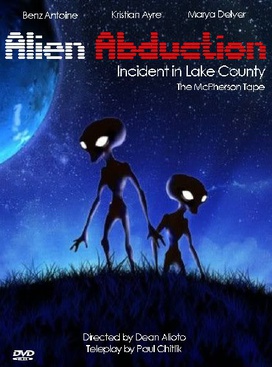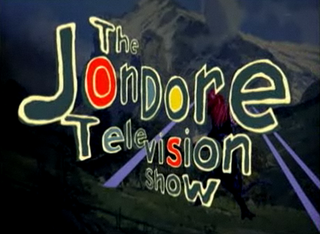Reality television is a genre of television programming that documents purportedly unscripted real-life situations, often starring unfamiliar people rather than professional actors. Reality television emerged as a distinct genre in the early 1990s with shows such as The Real World, then achieved prominence in the early 2000s with the success of the series Survivor, Idols, and Big Brother, all of which became global franchises. Reality television shows tend to be interspersed with "confessionals", short interview segments in which cast members reflect on or provide context for the events being depicted on-screen; this is most commonly seen in American reality television. Competition-based reality shows typically feature the gradual elimination of participants, either by a panel of judges, by the viewership of the show, or by the contestants themselves.
A mockumentary is one type of film or television show depicting fictional events, but presented as a documentary which in itself is a subset of a faux-documentary style of film-making.

Forgotten Silver is a 1995 New Zealand mockumentary film that purports to tell the story of a pioneering New Zealand filmmaker. It was written and directed by Peter Jackson and Costa Botes, both of whom appear in the film in their roles as makers of the documentary.
Docudrama is a genre of television and film, which features dramatized re-enactments of actual events. It is described as a hybrid of documentary and drama and "a fact-based representation of real event".
Cinéma vérité is a style of documentary filmmaking developed by Edgar Morin and Jean Rouch, inspired by Dziga Vertov's theory about Kino-Pravda. It combines improvisation with use of the camera to unveil truth or highlight subjects hidden behind reality. It is sometimes called observational cinema, if understood as pure direct cinema: mainly without a narrator's voice-over. There are subtle, yet important, differences between terms expressing similar concepts. Direct cinema is largely concerned with the recording of events in which the subject and audience become unaware of the camera's presence: operating within what Bill Nichols, an American historian and theoretician of documentary film, calls the "observational mode", a fly on the wall. Many therefore see a paradox in drawing attention away from the presence of the camera and simultaneously interfering in the reality it registers when attempting to discover a cinematic truth.

Dark Side of the Moon is a French mockumentary by director William Karel. It originally aired on the Franco-German television network Arte in 2002 with the title Opération Lune.

F for Fake is a 1973 docudrama film co-written, directed by, and starring Orson Welles who worked on the film alongside François Reichenbach, Oja Kodar, and Gary Graver. Initially released in 1974, it focuses on Elmyr de Hory's recounting of his career as a professional art forger; de Hory's story serves as the backdrop for a meandering investigation of the natures of authorship and authenticity, as well as the basis of the value of art. Far from serving as a traditional documentary on de Hory, the film also incorporates Welles's companion Oja Kodar, hoax biographer Clifford Irving and Orson Welles as himself. F for Fake is sometimes considered an example of a film essay.
Narrative film, fictional film or fiction film is a motion picture that tells a fictional or fictionalized story, event or narrative. Commercial narrative films with running times of over an hour are often referred to as feature films, or feature-length films. The earliest narrative films, around the turn of the 20th century, were essentially filmed stage plays and for the first three or four decades these commercial productions drew heavily upon the centuries-old theatrical tradition.

And Life Goes On is a 1992 Iranian film directed by Abbas Kiarostami. It was screened in the Un Certain Regard section at the 1992 Cannes Film Festival. It is considered the second film in Kiarostami's Koker trilogy.

Alien Abduction: Incident in Lake County originally titled The McPherson Tape is a 1998 American pseudo-documentary horror television film directed by Dean Alioto. Originally aired on UPN on January 18, 1998. Kristian Ayre plays Tommy, a teenager in Lake County, Montana, who is making a home movie of his family's Thanksgiving dinner when they are attacked and ultimately abducted by extraterrestrials. The film is a remake of the 1989 version by the same director.
In filmmaking, found footage is the use of footage as a found object, appropriated for use in collage films, documentary films, mockumentary films and other works.
Haxan Films is a production company headquartered in Orlando, Florida. They are famous for producing the cult classic independent horror film The Blair Witch Project. The name is taken from the 1922 Swedish/Danish silent movie Häxan.

Shaky camera, shaky cam, jerky camera, queasy cam, run-and-gun or free camera is a cinematographic technique where stable-image techniques are purposely dispensed with shaking. It is a hand-held camera, or given the appearance of being hand-held, and in many cases shots are limited to what one photographer could have accomplished with one camera. Shaky cam is often employed to give a film sequence an ad hoc, electronic news-gathering, or documentary film feel. It suggests unprepared, unrehearsed filming of reality, and can provide a sense of dynamics, immersion, instability or nervousness. The technique can be used to give a pseudo-documentary or cinéma vérité appearance to a film.

The Jon Dore Television Show is a Canadian mockumentary-style comedy television series, created by Jon Dore and John Brunton. The show stars Canadian actor and comedian Jon Dore, of recent Canadian Idol co-host fame. The Comedy Network ordered 13 half-hour episodes of the series, which premiered on October 17, 2007 at 10pm ET. The second season premiered on January 21, 2009. A third season was supposed to be premiered in 2010 until Dore confirmed the series' cancellation. The show also aired on the Independent Film Channel in the United States.

Docufiction is the cinematographic combination of documentary and fiction, this term often meaning narrative film. It is a film genre which attempts to capture reality such as it is and which simultaneously introduces unreal elements or fictional situations in narrative in order to strengthen the representation of reality using some kind of artistic expression.

Lake Mungo is a 2008 Australian mockumentary psychological horror film written and directed by Joel Anderson and starring Talia Zucker and Martin Sharpe. It employs mockumentary-style storytelling with found footage and docufiction elements, using actor "interviewees" to present the narrative of a family trying to come to terms with the drowning death of their daughter, and the potentially supernatural events they experience after it.
Found footage is a cinematic technique in which all or a substantial part of the work is presented as if it were film or video recordings recorded by characters in the story, and later "found" and presented to the audience. The events on screen are typically seen through the camera of one or more of the characters involved, often accompanied by their real-time, off-camera commentary. For added realism, the cinematography may be done by the actors themselves as they perform, and shaky camera work and naturalistic acting are routinely employed. The footage may be presented as if it were "raw" and complete or as if it had been edited into a narrative by those who "found" it.

The Citizen Kane trailer is a four-minute, self-contained, "making of" promotional short film by Orson Welles and the Mercury Theatre, released in 1940 to promote the film Citizen Kane. Unlike other standard theatrical trailers of the era, it did not feature any footage of the actual film itself, but was a wholly original pseudo-documentary piece. It is considered by numerous film scholars such as Simon Callow, Joseph McBride and Jonathan Rosenbaum to be a standalone short film, rather than a conventional "trailer", and to represent an important stage in developing Welles's directorial style.
Faking a Murderer is a Canadian mockumentary film, directed by Stuart Stone and released in 2020. An affectionate parody of the true crime genre, the film stars Stone and his filmmaking partner and brother-in-law Adam Rodness as themselves, trying to make a true crime documentary about their efforts to track down David Stoner, a man they have found seemingly confessing to murders in a series of bloody internet videos.










